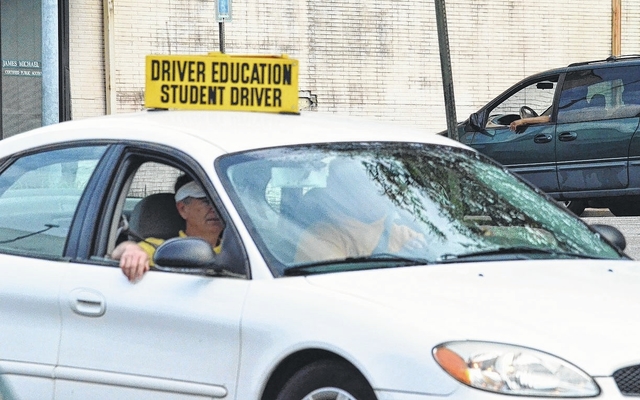
ROCKINGHAM — The consensus among Richmond County leaders is that the driver education program is necessary — the contention is how it’s paid for.
Under the proposed Senate budget approved earlier this month, public school districts would still be required to offer drivers’ ed classes for another year. But without state funding, the cost limit of $65 could grow to as much as $400 in some counties. The plan would also give money to the State Board of Community Colleges to develop a plan for taking over the program and its costs.
Citing concern for families forced to pay out-of-pocket, Sen. Ralph Hise, R-Mitchell, introduced an amendment to the budget ending the state’s requirement for drivers under 18 to take drivers’ education before receiving their license. Instead, teens would have to log 25 more hours in the car with their parents and score five percentage points higher on the written test.
The House budget would plan to keep drivers’ education publicly subsidized. It would renew last year’s $24.6 million spent on driver education for one year, and then set up an annual fund for the program paid for by late vehicle registration fees.
“I believe teaching drivers’ education to students is a public safety issue, and I believe the state should not eliminate the program,” said Dr. Cindy Goodman, superintendent of Richmond County Schools. “While public schools have historically ‘housed’ the program, I would have no problem with moving it to community colleges.”
Republican Sen. Tom McInnis, a former member of the Richmond County Board of Education, echoed Goodman’s thoughts of the program’s necessity.
“I believe in the drivers’ education program as it is a proven learning experience that saves lives in our state,” he said in a statement Tuesday.
“The statistics show that 46 percent of students are failing the course and for the safety of our children, we need a better outcome,” he continued. “The current proposed budgets of the House and Senate have different ideas on drivers’ education. Both sides are currently in negotiation on the budget and it will be a while before we know an outcome.”
Goodman said some superintendents from across the state have raised the issue of students in other districts not having easy access to a community college like students in Richmond County do.
School board Chairman Wiley Mabe also mentioned that a lot of students “don’t have the luxury” of having parents who can properly instruct them or have access to a vehicle.
“The worst possible scenario for Richmond County Schools,” Goodman said, “is the one that is taking place in the General Assembly’s continuing budget: requiring us to teach a program that costs roughly $300 per student — less the $65 student contribution — and not funding it.”
That’s one of Mabe’s biggest concerns.
“Nobody wants to pay for it,” he said, calling the current situation an unfunded mandate. “We’ve got enough of those already.”
“It’s not fair to pass the buck to the school system,” he went on. “It’s not fair, and it’s not right.”
The school board voted in January to raise student parking fees and charge for the program.
Mabe said no matter which entity winds up running the program, there are costs associated with facilities, resources and instructors and that there needs to be classroom instruction to learn the rules and regulations of the road.
“If you hand it to somebody, are you going to give them the funds to do the proper job?” he asked.
North Carolina was one of the first two states to implement a graduated licensing program in 1997, and in the 10 years after 1999 saw teen fatality rates drop 40 percent, according to a 2014 review by the General Assembly’s Program Evaluation Committee. But many other states have also begun implementing such programs, and North Carolina’s teen fatality rate was higher than the national average in 2010.
According to the committee’s review, 33 percent of students who completed the course failed the written driving test between 2012 and 2013. That was a 26 percentage point decrease from five years prior, when 59 percent of students failed the test.
The Associated Press contributed to this story. Reach reporter William R. Toler at 910-817-2675 and follow him on Twitter @William_r_Toler.
